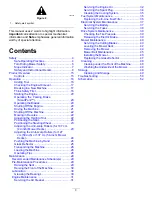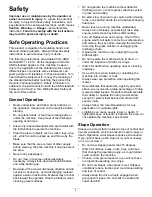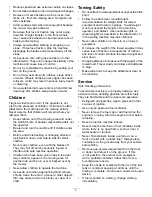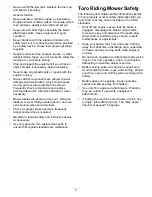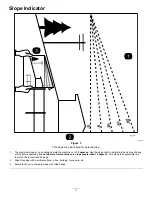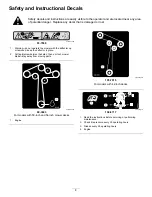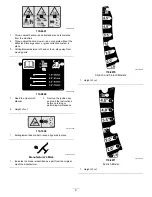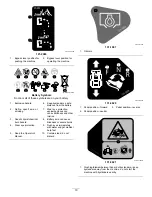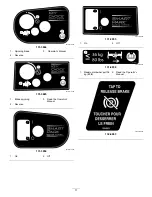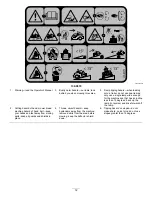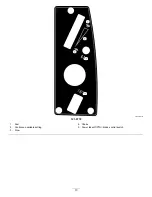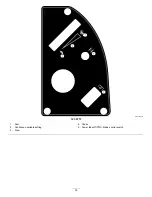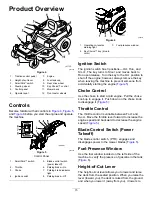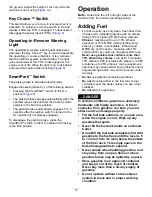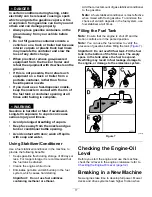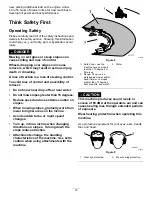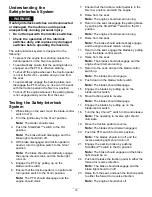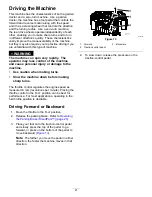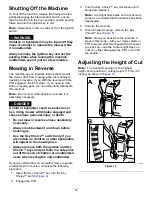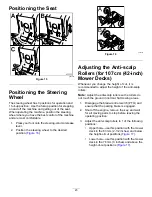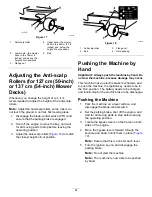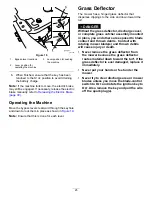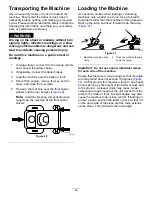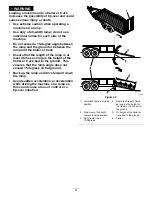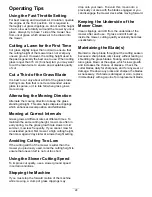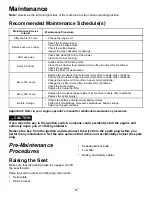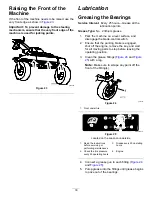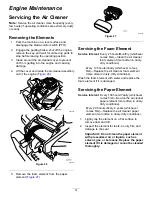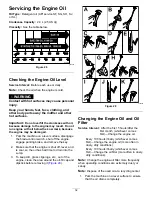
DANGER
In certain conditions during fueling, static
electricity can be released causing a spark
which can ignite the gasoline vapors. A fire
or explosion from gasoline can burn you and
others and can damage property.
•
Always place gasoline containers on the
ground away from your vehicle before
filling.
•
Do not fill gasoline containers inside a
vehicle or on a truck or trailer bed because
interior carpets or plastic truck bed liners
may insulate the container and slow the
loss of any static charge.
•
When practical, remove gas-powered
equipment from the truck or trailer and
refuel the equipment with its wheels on the
ground.
•
If this is not possible, then refuel such
equipment on a truck or trailer from a
portable container, rather than from a
fuel-dispenser nozzle.
•
If you must use a fuel-dispenser nozzle,
keep the nozzle in contact with the rim of
the fuel tank or container opening at all
times until fueling is complete.
WARNING
Gasoline is harmful or fatal if swallowed.
Long-term exposure to vapors can cause
serious injury and illness.
•
Avoid prolonged breathing of vapors.
•
Keep face away from the nozzle and gas
tank or conditioner bottle opening.
•
Avoid contact with skin; wash off spills
with soap and water.
Using Stabilizer/Conditioner
Use a fuel stabilizer/conditioner in the machine to
provide the following benefits:
•
Keeps gasoline fresh during storage of 90 days or
less. For longer storage it is recommended that
the fuel tank be drained.
•
Cleans the engine while it runs
•
Eliminates gum-like varnish buildup in the fuel
system, which causes hard starting
Important:
Do not use fuel additives
containing methanol or ethanol.
Add the correct amount of gas stabilizer/conditioner
to the gasoline.
Note:
A fuel stabilizer/conditioner is most effective
when mixed with fresh gasoline. To minimize the
chance of varnish deposits in the fuel system, use
fuel stabilizer at all times.
Filling the Fuel Tank
Note:
Ensure that the engine is shut off and the
motion controls are in the parked position.
Note:
You can use the fuel window to verify the
presence of gasoline before filling the tank (
Important:
Do not overfill fuel tank. Fill the fuel
tank to the bottom of the filler neck. The empty
space in the tank allows the fuel to expand.
Overfilling may result in fuel leakage, damage to
the engine, or damage to the emissions system.
g027243
Figure 7
Checking the Engine-Oil
Level
Before you start the engine and use the machine,
check the oil level in the engine crankcase; refer to
Checking the Engine-Oil Level (page 32)
.
Breaking in a New Machine
New engines take time to develop full power. Mower
decks and drive systems have higher friction when
17
Summary of Contents for TimeCutter SW 5000
Page 52: ...Schematics g027754 Electrical Diagram Rev A 52 ...
Page 53: ...Notes ...
Page 54: ...Notes ...
Page 55: ...Notes ...

